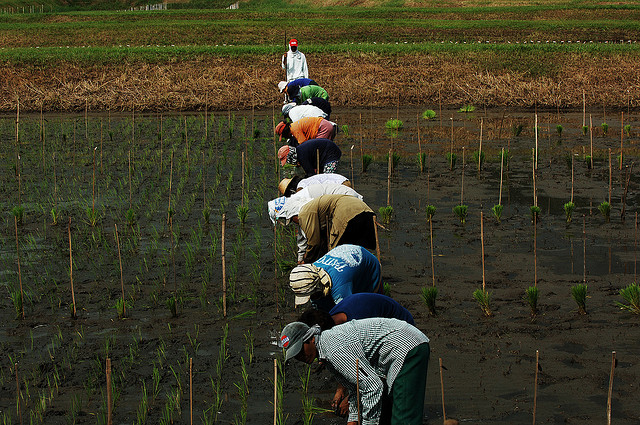Rice comes in different textures which include; short-grain, medium-grain and long-grain. Rice grows easily especially when planted in a rice paddy, rice bed or in buckets so long as the growers ensure the rice plant is growing on the correct soil level, water levels and is able to receive several other nutrients.
The three main rice plant categories, short grain, medium grain and long grain do extremely well in wet conditions. Rice paddy containing swamp like water levels is the perfect rice growing domain.
As a grower, you are advised to check when the rice grains develop and further drain the water the rice plant has grown in to facilitate a perfect harvesting and milling atmosphere. After successfully harvesting and milling your rice, the rice reaches the consumption level.

So how do you grow Rice Plants?
With the right kind of rice seeds you wish to grow in your farm, the next step is to select the Rice paddy location. The soil in the paddy should carry a slightly small acidic clay level to attain the best results. Secondly, rice paddies require being in an open places to help rice plant receive full levels of sunlight.
Rice grows best under warm and sunny conditions with temperatures reaching 21 degrees Celsius. Pertaining to the rice type, and the rice bed the rice plant is grown on, farmers allow for 3 to 6 months of plant and flower growth.
When it comes to creating the perfect rice bed and have the rice growing in perfect conditions, farmers soak the rice seeds in water for approximately 12 to 24 hrs, in preparation for planting. Rice plant seeds should be planted inside at-least 6 inches of moist soil.
Farmers are requested to observe water levels of the planting area. The standard levels are 2 inches of water for the rice to grow. Farmers also keep an eye on the rice paddles to observe whether the rice plant shoots will grow after a week’s time.
To halt the plant from becoming overcrowded, farmers are requested to thin and space out rice seeds. To achieve best results, the standard thinning distance of the seedlings should be not less than 4 inches apart in rice rows that range from 9 to 12 inches apart.
Farmers are requested to let the seedlings grow up to 7 inches tall a period that will be approximately after a month. After the thinning process, farmers are requested to wait for the grains to mature. The maturity stage takes between 3 to 4 months.
During harvesting season, farmers are asked to either wait for the water to dry out by it or drain it before commencing with the harvest.
What is A Rice Paddy?
A paddy field is a flooded parcel of land that is fertile and arable for growing semiaquatic rice. However, rice paddies cultivations are not similar to deep water rice cultivation. The latter is grown in flooded conditions where water levels are more than 20 inches deep in a period of 30 days.
Rice paddies are the most popular types of rice farming methods strewn all over the East, South and Southern Asia regions where Rice is grown for domestic and commercial use. Fortunately, rice paddies can be built on almost every type of topography.
Its common nature to see rice paddies built into steep hillsides in terraces formats. There paddles built on flat land and paddles built of steep slopes that feature natural aspects such as marshes or rivers. Unfortunately, rice paddles that are built of uneven topographies require a great deal of labour and consume loads of materials.
The paddles also require huge quantities of water for irrigation. When it comes to ploughing the paddles, Oxen and water buffalos are a common feature among rice producing Asian countries.

